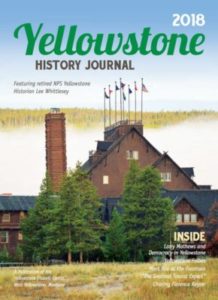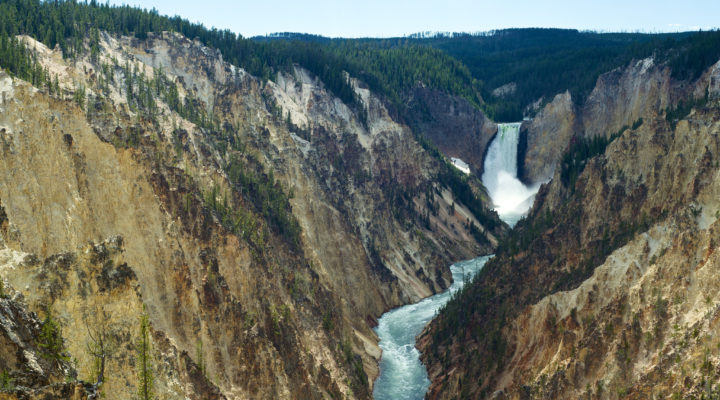Bruce Gourley is a Baptist from Georgia with a thing for history. And religion. And the American West.
His love of faith and the past led him to become executive director of the Baptist History and Heritage Society, where he served from 2010 to 2017.

Bruce Gourley
During those years he penned articles with titles like “Baptist Identity: A Revolutionary Journey” and “Evangelical Christians: Persecuted Believers or Spoiled Brats” for the society’s Baptist Studies Bulletin.
But he also has a thing for the American West, including Montana, where he has lived since the early 1990s. His specialty there is anything having to do with Yellowstone National Park.
That passion — even calling — now has him penning and editing articles for the Yellowstone History Journal, a new scholarly publication of which he is the founder and editor.
Gourley said the annual publication is the first of its kind devoted exclusively to the history of Yellowstone. Its inaugural edition appeared this month.
“It’s the first National Park and the most famous in the world,” he said. “It’s been around since 1872. It’s strange that no one has done this before.”

The journal represents an intertwining of Gourley’s interest in religion, history and nature. He has a doctorate in American history and is a former college campus chaplain and moderator of the Cooperative Baptist Fellowship West. And he’s lived in the West since the early 1990s.
Gourley shared about the journal and how it reflects his academic and spiritual passions. Here are his comments, edited for clarity.
What’s your new project all about?
It’s basically like a small book. It’s an academic book, but it’s for public consumption. Articles are written by scholars to be sold in retail stores in the Yellowstone area.
I pitched it in January to a local nonprofit, the Yellowstone Historic Center. I have been on the board there. Unlike many local nonprofits, we have not had a publication. This is a whole new endeavor. The board was willing to go along with this it as long as I did it.
In January? And it’s already been published?
This thing rolled into Yellowstone last week. In four months we did this. Everything fell into place. I am pitching it to locals and to average Yellowstone tourists and park lovers.
Who are some of the contributors?
One is Lee H. Whittlesey. He was the official historian for the National Park Service at Yellowstone. He is the dean of Yellowstone historians.
Are there really enough topics out there to fill a journal?
In this issue we have six articles. Lee wrote an article about an early park concessionaire, who came to the park in the early 20th century. He ran a number of restaurants and there were a lot of colorful characters. Another is about the Yellowstone Follies. These were people who came into the park in the ’20s and ’30s to entertain tourists. There’s another article about a family who settled on the park boundary and opened a store. It’s an oral interview with the daughter of that settler.
How did a Baptist from Georgia get so deeply connected to the American West?
The story begins 31 years ago when as a college student I spent a summer in Wyoming and part of that time in the park. I fell in love with the West and Yellowstone. I wanted to come back after seminary, which I did in 1993.
What is it about the park that is such a powerful draw for you?
I would describe Yellowstone as one of those places where I go for restoration and for inspiration at times. I like to hike in the backcountry.
Does the park have spiritual properties?
If you go back in park history to when the National Parks were coming about, the parks were heavily romanticized. The Transcendentalists were a part of that. They used a lot of religious language to describe features in the park. In the 1950s, park ranger manuals told rangers to talk about the wilderness in spiritual terms because that’s how people perceived them.
Is your work on the journal an extension of your calling?
What I am doing now is a calling, something that I feel compelled to do. It’s sharing the good news of Yellowstone. You could think of it that way.
What else are you up to?
I’m still writing for Nurturing Faith. And I do tours in the park. They are hiking conversations. And as of this fall I will be teaching a course on Islamic history at Montana State University, at the extension.
Is it fair to compare you to Kevin Costner’s character in Dances With Wolves, who goes out West and never returns?
I’ve loved it from the beginning. There is no other place I would rather live.


